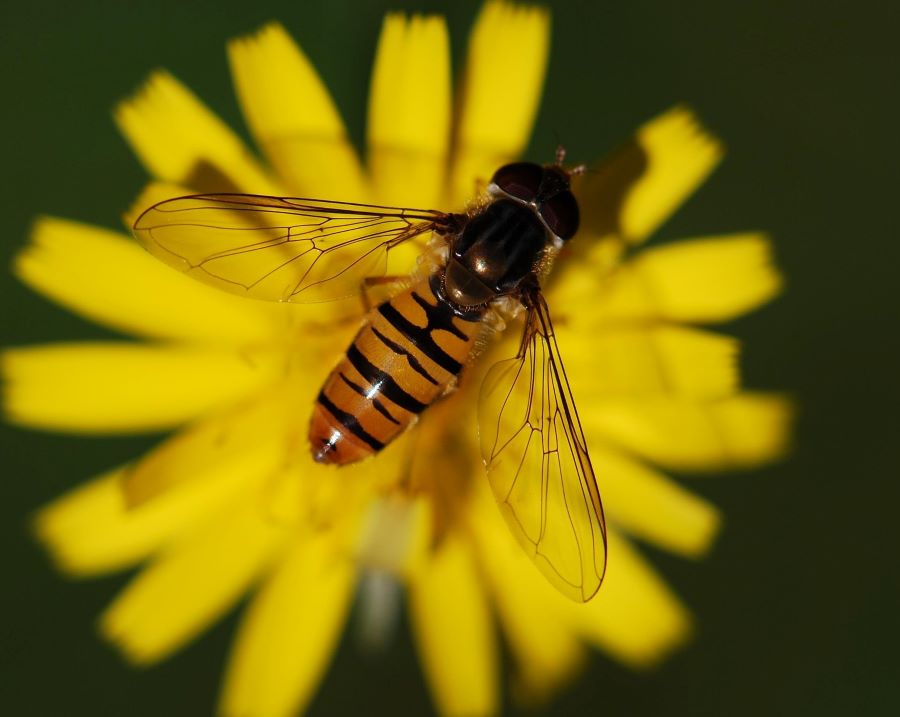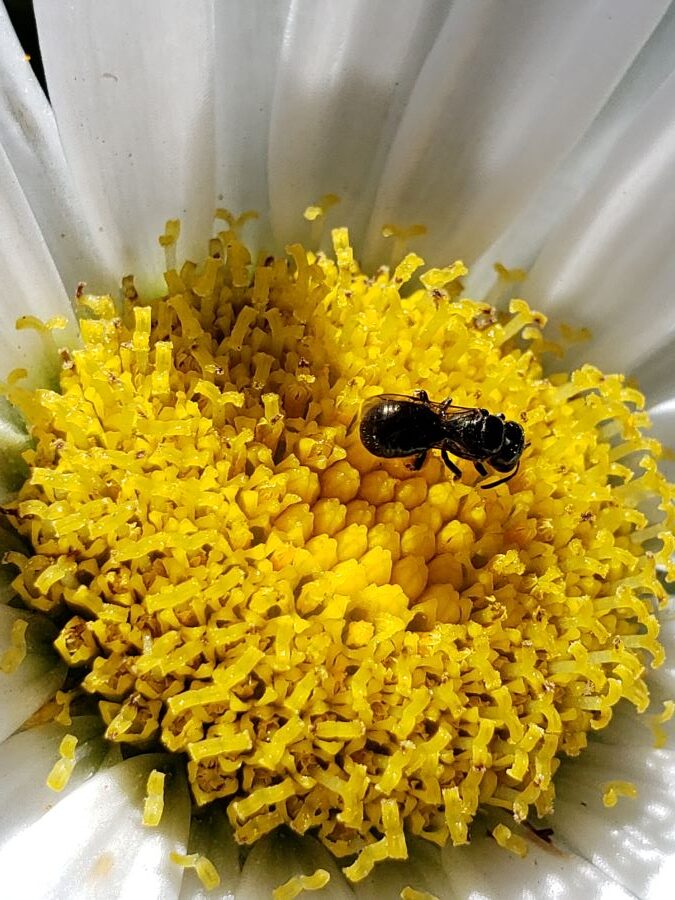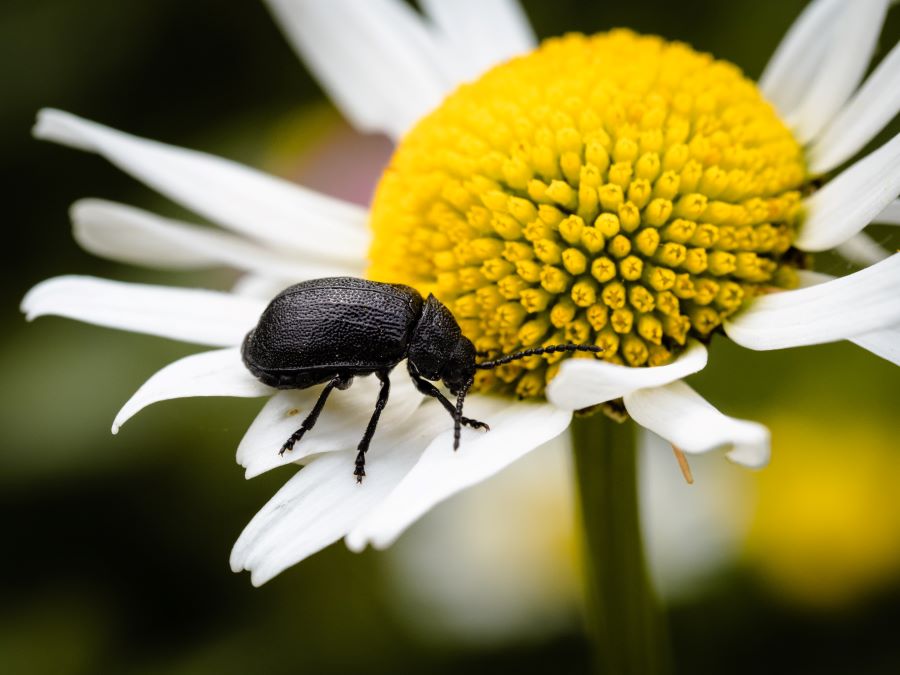You may be letting the beneficial insects take care of your pest problems, but there are a few (and pretty) steps you can take to boost and maintain their population in your landscape.
If you’re having a hard time finding any beneficials, or you have pest problems that are really pushing you to consider extreme measures… and if you like having a garden that takes care of things for you plus gives you nice flowers… here are some things you can do.
Keep the commute short for the good bugs

Since most predacious bugs (our beneficial insects) need both pests and flowers to feed on, keep their food sources near each other. If they have to go far between the pests and the flowers, they’ll live elsewhere or not at all. Be sure the best flowers for them are available in your gardens. Just all in the same landscape, or a close neighbor’s, is good.
Create an insectary border or garden
More than planting some good flowers in your landscape, plan a border or bed of flowers that have good sources of nectar and pollen for the beneficials. Also provide habitat for them. (See Habitat for pollinators for info.)
This can be a border bed or a patch. The border can go along a walkway, at the edge of a lawn, or even instead of a lawn, in or outside of a deer fence. It can be a pretty planting—filled with flowers and grasses, with evergreens that maintain visual structure through the winter.
If you’re having a problem with pests in your vegetable garden mix in some insectary plants to let predatory insects take up residence right alongside the plants. See below for ideas.
You can purchase seed blends that are good for an insectary bed. These will help you with the decision-making process. Here are some sources for those. Look in a local nursery (recommended) or find them at Johnny’s Seeds, Urban Farmer, or Outside Pride (and others too).
But many perennial flowers are perfect for attracting and feeding beneficials. With the benefit of having some cutting flowers to harvest. See some examples in What Beneficial Insects Do for You and What They Need From You on my website.

Make your insectary fire-safe
Keep the highest plants less than three times the height of any low branches above it. Use the more water needy plants in Zone 1 of your landscape. Use lower water need plants in Zone 2 and beyond. (Remember to keep Zone 0 clear.) Prune out any dead material for fire safety and place it where it can provide habitat for pollinators and predators in a more fire-safe spot.
Create a beetle bank to help with ground pests
Predaceous ground beetles seek out and feed on slugs and snails and their eggs, cutworms, and other soil dwelling pests or pupae. A beetle bank will provide habitat for them.
A beetle bank is a berm or mound a foot above the surrounding ground that is planted with native bunch grasses. At least three different species is best. It’s elevated because these beetles naturally climb to stay dry. The grasses provide a dry warm habitat for the insects in winter. In spring and summer the beetles will patrol the grounds for snails, slugs, their eggs, and other soil-dwelling pests, and gobble them up.
Beetle banks can add some visual interest to your yard, too. It can be pretty with grasses, but you certainly can add some low-growing plants and some other perennials to make a pretty asset to your landscape while keeping pests under control.
Native bunch grasses such as Deer Grass, California Fescue, Purple Three Awn Grass are good grasses for us in Nevada County. Remember that grasses are deer resistant.
Purchase supplemental insects if you need
You can purchase supplemental insects at various stages of their lives. But this is more appropriate for farm operations. And it may not always be effective.
Put insectary plants in your vegetable garden
By interplanting your vegetable garden with good insectary plants you’ll lure in and maintain a beneficial insect population. For example, kale and broccoli are really good at attracting cabbage moths and aphids. But it’s been shown that when other plants are interspersed with helpful flowers, the pest density goes down.
Flowers like sunflowers attract many beneficials in the vegetable garden.
And use herbs like dill, cilantro, basil, oregano, thyme, parsley, all are magnets for beneficials.
The plants in your insectary border and in your beetle bank can be outside of the deer fence and be made of all deer resistant plants.
Plant a hedgerow
A hedgerow is a planting, like a hedge, of mixed plants, especially woody plants.
Hedgerows include woody plants to provide permanent year-round habitat for predatory insects. They can also provide a variety of flowers over a season for insects, both pollinators and beneficials, and berries for birds.
Hedgerows provide services to orchards and vineyards, and to our homes, too, to block or enhance views, create microclimates that reduce wind speed, protect against soil erosion, filter out air-borne wind.
Consider a hedgerow made of a variety of native plants that are deer resistant, drought tolerant, and even fire safe, so long as they’re planted at appropriate distances.
Here are some native plants that can be used in a hedgerow: Toyon, ceanothus, mahonia, coffeeberries, red flowering currant, and redbud are good for some height. For lower plants, there are a variety of manzanitas, native salvias, and perennials like coyote mint as examples.
Know all the benefits
With these landscape elements and the plants you can use in them, you’re attracting, feeding, and housing the most helpful insects there are: beneficial insects, pollinators, and birds, too!
Insects form the base of all terrestrial ecosystems. They feed birds, fish, toads, frogs, snakes, spiders, raccoons, and even bears. They pollinate three quarters of the earth’s plants. Without insects, ecosystems will collapse.
So consider helping them and letting them do the work they naturally do, and be aware of their benefits. And you can reap those benefits when you help them.
Related Reading:
Get the Best Pest Control With Beneficial Insects—Here’s What They Need From You
Grow Some Flowers to Create a Meadow for Wildlife

